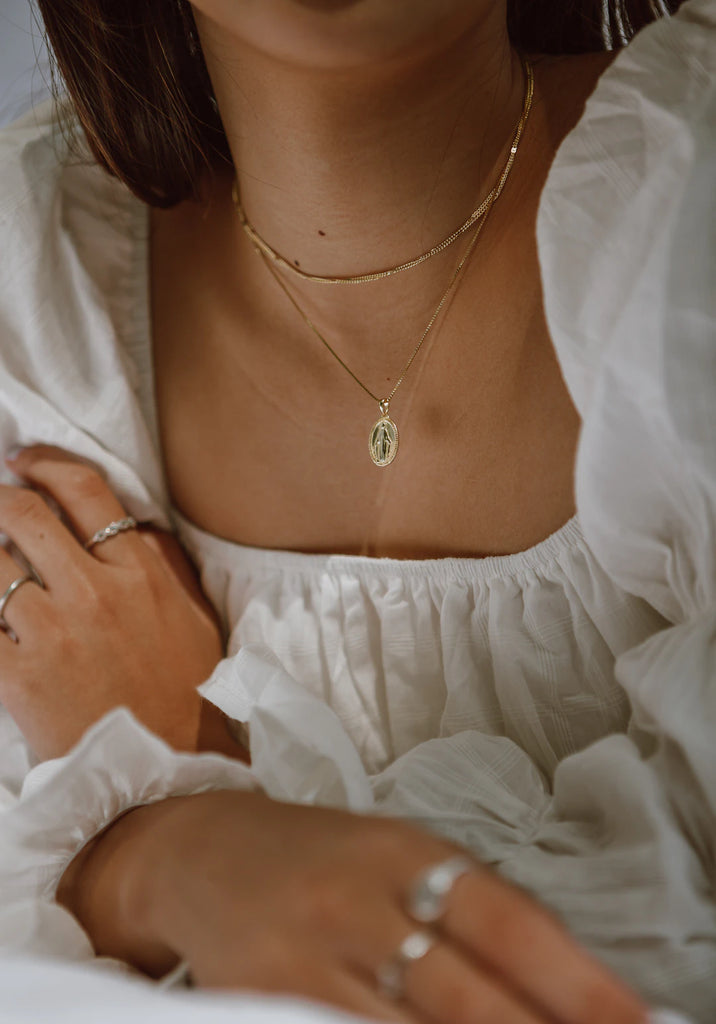The Science Behind Different Jewelry Finishes

Frequently Asked Questions
1. What is the importance of jewelry finishes?
2. What are the common types of jewelry finishes?
3. How does a polished finish affect jewelry maintenance?
4. What advantages does a matte finish provide?
5. What cleaning techniques are recommended for different jewelry finishes?
When it comes to jewelry, the finish can make a world of difference in appearance, durability, and overall appeal. Jewelry finishes include everything from shiny, polished surfaces to matte textures, and each type serves a unique purpose while enhancing the piece's aesthetic. In this article, we will delve into the science behind different jewelry finishes, explore their characteristics, and help you better understand how they impact quality, maintenance, and wearability—focusing on popular styles like Bali silver earrings.
Understanding Jewelry Finishes
Jewelry finishes are the final steps in the crafting process that significantly alter a piece's look and feel. A finish can highlight the artistry of a design, complement the materials used, and improve the piece’s resilience. Below are some of the common types of jewelry finishes and their specific characteristics:
Polished Finish
The polished finish is one of the most familiar and sought-after finishes in jewelry. This finish is achieved by buffing the metal to a high shine using abrasive materials. The result is a reflective surface that catches and reflects light beautifully.
- Advantages: A polished finish emphasizes the color and quality of the metal, making it appear vibrant and luxurious.
- Disadvantages: Polished surfaces can be more prone to scratches and tarnishing, requiring regular maintenance to keep them looking their best.
Matte Finish
A matte finish is characterized by its non-reflective surface. It’s less shiny and gives a more subdued elegance to the jewelry. To achieve this effect, artisans use techniques like sandblasting or chemical treatments.
- Advantages: Matte finishes are less likely to show fingerprints and scratches and can offer a modern, understated look.
- Disadvantages: The muted tones of the matte finish can conceal some of the metal’s intrinsic quality compared to polished finishes.
Satin Finish
Satin finishes combine the best aspects of both polished and matte finishes, providing a semi-gloss appearance. This finish is often created through light brushing and is softer and silkier than shiny finishes.
- Advantages: The satin finish offers a unique texture that’s less prone to visible scratches and is easier to maintain.
- Disadvantages: While appealing, the satin finish may not exhibit as much luster or brilliance as fully polished surfaces.
The Role of Texture in Jewelry Finishes
Texture is another important aspect that can enhance or modify a jewelry piece's finish. Different textures can be created through various methods, including hammering, engraving, or etching.
Hammered Finish
The hammered finish is created by striking the metal with a tool, resulting in irregular and organic patterns. This type of finish is unique to each piece and lends a handmade quality to jewelry designs.
- Advantages: Hammered finishes can capture light in fascinating ways, providing a dynamic visual aspect.
- Disadvantages: The uneven surface may not appeal to those who prefer smoother textures.
Engraved Finish
Engraved finishes involve cutting designs or patterns into the surface of the metal. This ancient technique allows for personalization and intricate artistry.
- Advantages: The engraved finish adds character and depth to jewelry pieces, making them perfect for personalized gifts.
- Disadvantages: The engraving process can weaken the metal if not done correctly, leading to potential durability issues.
Choosing the Right Finish for Your Style
When selecting a jewelry piece, especially when exploring styles like Bali silver earrings, it’s essential to consider the finish that aligns with your personal style and practical needs. Here are some tips on how to choose the perfect finish:
- Event Appropriateness: For formal occasions, polished finishes might be more suitable, while matte or hammered finishes can enhance a casual look.
- Durability Concerns: If you lead an active lifestyle, consider a matte or satin finish that requires less maintenance than polished items.
- Personal Aesthetic: Choose a finish that resonates with your personal style—whether you prefer edgy designs or classic elegance.
How Jewelry Finishes Affect Maintenance
The finish of a piece also influences how much care and maintenance it requires. Understanding these differences can help you ensure your jewelry stays beautiful for years to come.
Cleaning Techniques by Finish Type
Different finishes require tailored cleaning methods to prevent damage:
- Polished Finishes: Use a soft cloth to buff the surface regularly and remove tarnish. Avoid harsh chemicals unless specifically designed for polished metals.
- Matte Finishes: Clean with a gentle brush or cloth to avoid scratching the surface. Keep it away from cleaning solutions that can alter its appearance.
- Satin Finishes: Like matte, they require gentle cleaning methods, and a fabric polish may enhance their sheen without damaging the texture.
Exploring the World of Bali Silver Earrings
Bali silver earrings are a stunning representation of the intricate craftsmanship found in jewelry finishes. Originating from Indonesia, these pieces not only showcase the beauty of silver but also highlight exquisite finishes that enhance their delicacy and charm.
The Artisan Touch
A major draw of Bali silver earrings is the handmade aspects that allow artisans to incorporate various finishes and textures. This creates unique pieces that are both visually captivating and rich in cultural significance.
- Textural Variety: Artisans often utilize a mix of polished, matte, and hammered finishes to create compelling contrasts in their designs.
- Symbolic Motifs: Commonly etched or engraved designs may reflect cultural symbols, adding personal meaning and heritage to each pair.
- Quality Silver: The high-quality silver used in these earrings gives a luxurious touch, making the finishes shine even brighter.
Final Thoughts
Choosing the right jewelry involves more than just picking a pretty piece—it means understanding the finishes that enhance its beauty and function. Whether you lean towards polished elegance, matte simplicity, or the unique charm of Bali silver earrings, knowing how each finish affects maintenance and wearability ensures your jewelry remains a treasured part of your collection. Embrace the science behind jewelry finishes, and let your choices reflect not just your style, but also your appreciation for artistry and craftsmanship.

Leave a comment